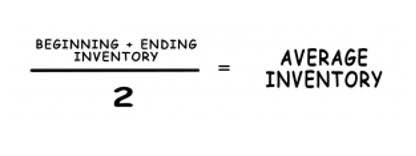
For instance, when a company buys back their own shares, they register them in a ‘Treasury Stock’ contra equity account, which reduces total shareholders’ equity. If a customer returns a product, the ‘Sales Returns’ contra revenue account lowers the total sales revenue, reflecting the true income. Contra asset examples like ‘Accumulated Depreciation’ reduce the value of fixed assets, showing their worth after usage over time. Contra revenue accounts are the dedicated detectives tracking down all the subtractions from a company’s gross revenue. These accounts keep an eagle eye on sales returns, allowances, and discounts, ensuring you’re not overestimating your income. By subtracting these amounts from the total sales, what you’re left with is net revenue— the revenue that’s truly earned and likely to stay in the company’s pocket.
Sales Allowances

In other words, its expected balance is contrary to—or opposite of—the usual credit balance in a revenue account. Let’s consider a payroll fictional example of a small clothing retail business called “StyleMart” to illustrate the use of contra revenue accounts in financial accounting. To account for depletion, an Accumulated Depletion account is created so that it can serve as a contra account for the parent Fixed Asset account.
- This might mean adjusting your strategies based on seasonal trends, customer feedback, or new market entrants.
- If a customer returns a product, the ‘Sales Returns’ contra revenue account lowers the total sales revenue, reflecting the true income.
- This process calculates the decline in value of the natural resource and offsets it against the initial appraisal of the land where the resource is being extracted from.
- If a customer returns $500 of this merchandise, Company K will debit Sales Returns and Allowances for $500 and will credit Accounts Receivable for $500.
- Chartered accountant Michael Brown is the founder and CEO of Double Entry Bookkeeping.
- To properly account for this scenario in their books, the company must record the gross sales figure (which is the total sales revenue) and the value of the discount on early payments.
- If every single buyer had taken advantage of the early payment discount, the company would have provided roughly $5 thousand in discounts during that same timeframe.
How Contra Revenue Works in Financial Statements
- They’re typically recorded as the same type of account as their parent but carry a negative balance.
- The company would see the original amount, discounted sale, and net sales in the contra revenue account.
- This means if you sold an item for $100 but gave a $10 allowance for a small scratch, you’d record $90 in net sales instead of the full $100.
- The balance is held as a current liability (credit) on the balance sheet of the business.
- Contra asset examples like ‘Accumulated Depreciation’ reduce the value of fixed assets, showing their worth after usage over time.
- First, it provides transparency in financial reporting by separating the reduction in revenue from regular sales and service transactions.
Contra revenue operates as a nuanced accounting tool designed to refine the presentation of a company’s revenue by incorporating adjustments for specific deductions or reductions in sales. The purpose of these accounts is to offset the gross income and arrive at a net revenue figure that more accurately reflects the actual amount earned by the company after accounting for certain factors. In practical terms, the contra-revenue process unfolds through recording transactions in these contra-accounts. A contra asset account is a type of account in accounting that has a natural credit balance and is used to decrease the balance of a related asset account. It contains negative balances that offset the balance in a paired asset account on a company’s balance sheet, revealing the net value of the asset. This general structure can be applied across all contra types, so if the parent account has a credit, the contra account will have a debit.

Quick Guide to Master Contra Accounts: Definition, Types & Examples Simplified
Accurate contra account use also smoothes out budget forecasting and financial planning, as businesses are not caught off-guard by suddenly realized losses or overstated assets. Baking in room for bad debt, asset depreciation, and returned goods means fewer surprises and more confident stakeholders. You would debit $50,000 as Accounts Receivable and credit $50,000 as Sales. If your client returns $1000 of the products bought, you record Sales Returns and Allowances worth $1,000 as debit and credit $1000 as Accounts Receivable. Pilot provides bookkeeping, CFO, and tax services for literally contra revenue definition thousands of startups and growing businesses.
- Company K’s income statement will report the gross Sales of $100,000 minus the sales returns and allowances of $500 and the resulting net sales of $99,500.
- Imagine a company that offers an early payment discount to its customers, reducing their invoiced amount by 5% if paid within one week of invoicing.
- Here are some practical ways to lower contra revenue, improve your discount strategies, and make sure your policies match industry standards.
- Keep reading to learn more about contra revenue accounts and what should go in them.
- The account is normally a debit balance and in use is offset against the revenue account which is normally a credit balance.
In a given month, the company generates $100 thousand in gross sales but provides a total of only about $2 thousand in discounts that month. If every single buyer had taken advantage of the early payment discount, the company would have provided roughly $5 thousand in discounts during that Restaurant Cash Flow Management same timeframe. In reality, the actual number of company discounts came closer to $2 thousand. However, some transactions may also decrease them while not directly stated on the income statement.

Cash Flow Statement

Contra revenue, with its careful adjustment of gross sales, contributes to a more accurate portrayal of a company’s financial performance. The main advantage of using separate contra revenue accounts is that each one provides targeted information about the individual deductions taken from sales. Since each of these deductions directly reduces your profits, it makes sense to research them in detail, to see if there are any actions that can be taken to reduce the number of deductions. For example, this analysis might indicate that your business has product quality problems or servicing issues that can be corrected.
Best Practices for Managing Contra Revenue
The credit entry for these transactions usually reduces the accounts receivable balances. As can be seen using the two accounts, allows information about the original sale to be maintained on the revenue account, and details of the sale returns to be maintained on the sales returns contra revenue account. Contra asset accounts are presented on the balance sheet as reductions from the asset accounts they relate to. They typically appear just below the related asset, with their credit balances reducing the total value of the assets, showing the net amount that’s carried on the books. This presentation separates them from positive asset balances for clear visibility of the adjustments.


